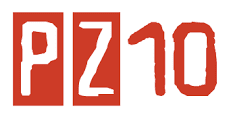
Directors: Paloma Baeza, Emma De Swaef, Niki Lindroth von Bahr, Marc James Roels
Writer: Enda Walsh
Cast: Matthew Goode, Helena Bonham Carter, Mia Goth, Paul Kaye, Miranda Richardson, Claudie Blakley, Susan Wokoma, Will Sharpe, Mark Heap, Stephanie Cole
Cinematography: James Lewis, Malcolm Hadley
Editor: Barney Pilling
Streaming on: Netflix
The protagonists in haunted house movies are trapped in a way their counterparts in other horror subgenres aren’t — serial killers can be outwitted, cursed objects can be disarmed or stowed away safely and demonic possessors can be exorcised. A house, on the other hand, is a massive investment, one that isn’t so easy to let go of. That’s why the realization that one’s home is haunted not only evokes feelings of claustrophobia and fright, but also slow-dawning despair. The House, a Netflix anthology of three eerie shorts written by Enda Walsh, gets this. It doesn’t aim to scare viewers so much as get them to contemplate the tragedy of feeling unsafe in a place one calls home.
The characters in this 97-minute-long stop-motion feature appear to be made out of felt material, which makes them look cozy and soft, even as the homes they inhabit eventually turn out to be anything but. The first short uses this texture to great effect. Facial tics such as the trembling of a cheek or the curling of a mouth in disdain are impressively rendered, as is the way the characters’ faces go frighteningly blank towards the end. In this segment, from directors Emma de Swaef and Marc James Roels, a mysterious benefactor offers an impoverished family living in the countryside a free luxury home. They accept, and are treated to lavish meals and fine linens, but soon find that the house has steep drops where there should be staircases, additional rooms where it should be structurally impossible for there to be any and patterned wallpaper that begins to resemble a thousand predatory eyes in the dark. Worse still, the mansion casts some sort of spell over the parents (Matthew Goode and Claudie Blakley), who begin to move mechanically as though in some sort of trance. The short plays out like a dark children’s fairytale, with an accompanying cautionary message.
In the second short, by director Niki Lindroth von Bahr, an unnamed anthropomorphic rat (Jarvis Cocker) runs himself ragged renovating a state-of-the-art house he plans to sell. He runs into problems almost immediately, including a vermin infestation he can’t just seem to get rid of. Initially ecstatic at the prospect of two other rats who seem interested in buying the house, he grows increasingly anxious when they make themselves at home and refuse to leave. The segment builds up its recurring themes of home invasion and infestation effectively to create an atmosphere of isolation and paranoia, which is what makes it so disappointing when the revelations don’t quite land and the payoff is too bizarre to feel like a natural conclusion. Still, it offers plenty of unnerving imagery, including the sight of the exhausted developer passed out on the kitchen floor, amid a swarm of dead creepy crawlies. The setting this time is more realistic, with detailed touches such as water spots on the house’s walls and grease stains in its oven, which makes the mid-short hallucinatory montage even more unnerving.
The third short has the spookiest setting — a foggy post-apocalyptic world devastated by floods — but is still the most lighthearted and hopeful of the bunch. Directed by Paloma Baeza, it follows Rosa (Susan Wokoma), an anthropomorphic calico cat running a dilapidated boarding house. All her tenants have fled and the two who are left can’t afford rent. Each day, the floodwaters draw nearer and Rosa, like the protagonists of the other two segments, finds herself struggling to hold onto a house that’s slipping from her grasp. This short, with its pointed dialogue and optimistic ending, brings the anthology’s message into sharp focus and asks audiences reconsider its title. The protagonists of each segment have been so focused on the superficial trappings of their house, they’ve forgotten what makes a home. For each, the house becomes a symbol of a better life, the chance to become the envy of one’s neighbours, escape debt in the middle of a recession or achieve a long-cherished goal, but as their obsession with it grows, they lose sight of what’s important and are caught in a trap of their own making.
Each story offers a different take on this theme, building to one cohesive anthology, and yet immersive enough to work as a standalone short. As Netflix anthologies go, this is one of the platform’s better offerings.
The post The House, On Netflix, Is An Eerie Stop-Motion Anthology appeared first on Film Companion.
source https://www.filmcompanion.in/streaming/netflix/the-house-netflix-review-is-an-eerie-stop-motion-anthology-mia-goth-helena-bonham-carter-matthew-goode/

